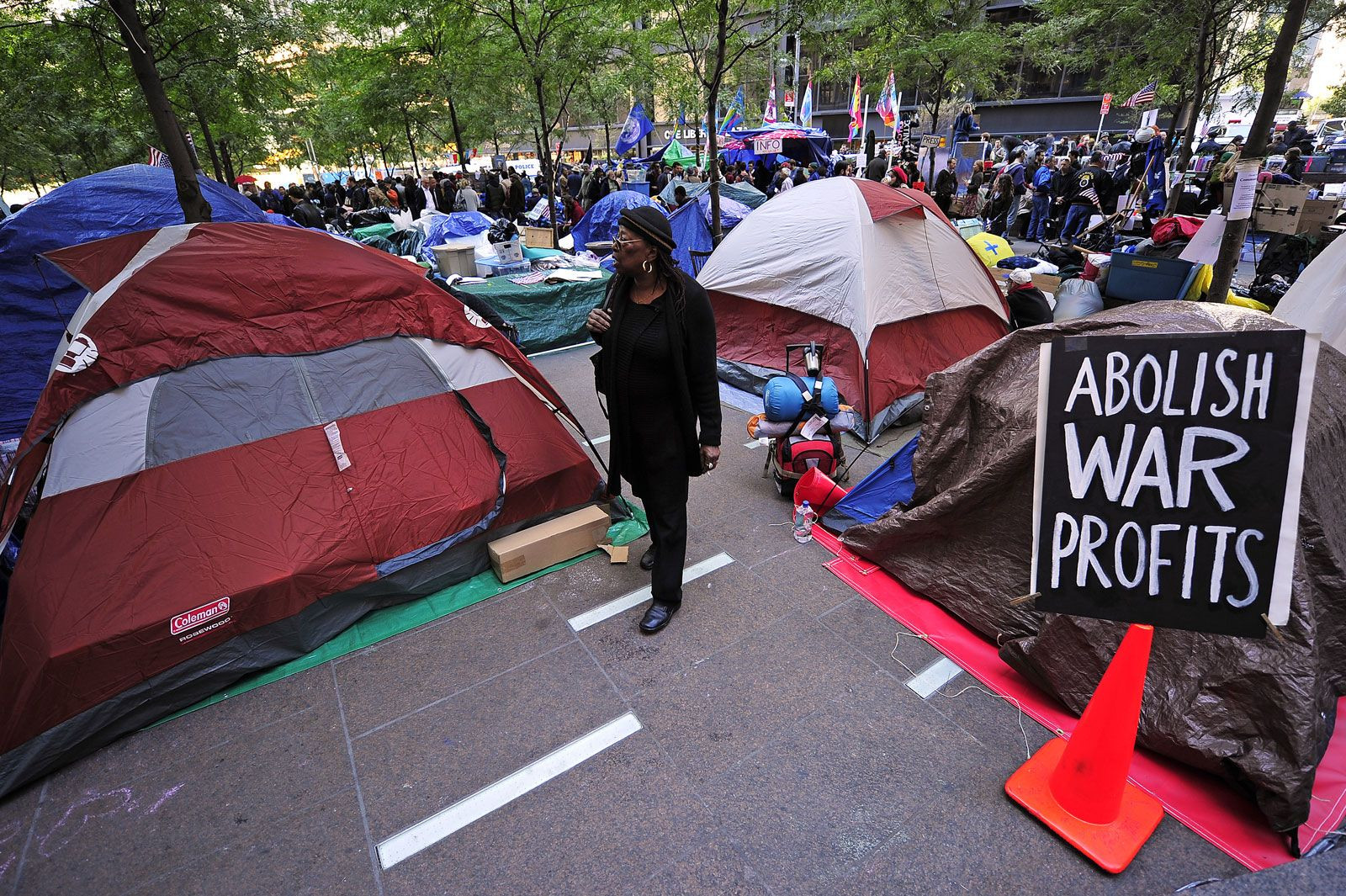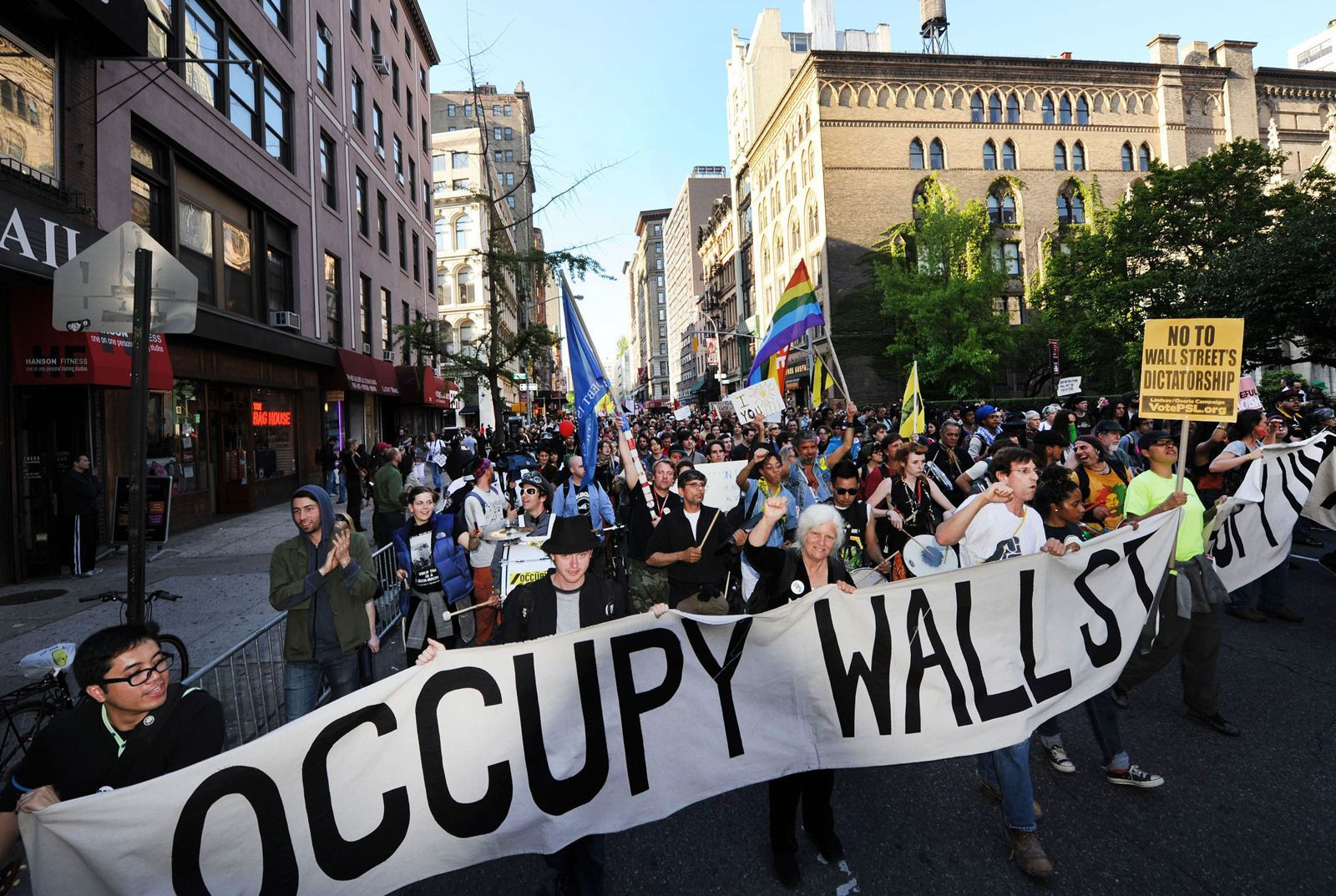The Occupy Wall Street (OWS) protest, a significant demonstration against economic inequality and corporate influence on law, unfolded from September 17 to November 15, 2011, primarily in New York City. This movement became a watershed moment, bringing the issue of wealth disparity into the forefront of American political discourse.
The Seeds of Discontent: Background to Occupy Wall Street
The protest emerged from the deep scars left by the financial crisis of 2007–08 and the subsequent Great Recession. This economic crisis dramatically lowered the living standards for many Americans, especially younger generations entering adulthood in the 1980s, while simultaneously widening the chasm between the wealthiest and the poorest. Public anger grew, directed at the United States’ financial sector, perceived as being culpable for the crisis yet largely escaping accountability and prosecution.
The concept for a protest in Lower Manhattan originated in discussions between Kalle Lasn, co-founder and editor of Adbusters magazine, known for its anti-consumerist stance, and Micah White, the magazine’s senior editor. Inspired by the mass protests in Egypt’s Tahrir Square against Hosni Mubarak’s regime in January 2011, they envisioned a similar demonstration in the heart of American finance. Lasn registered OccupyWallStreet.org in June and set September 17 as the protest’s launch date. The announcement, disseminated via an Adbusters email on July 13, quickly gained traction on social media platforms like Twitter and Reddit, signaling widespread interest. By August, a group of experienced organizers in New York City, many identifying as anarchists, formed the New York City General Assembly (NYCGA) to organize and guide the burgeoning protest.
From Planning to Occupation: The Protest Takes Shape
To prevent preemptive police action, the precise location of the protest remained undisclosed until the morning of September 17. Discovering that law enforcement was aware of their plans and had barricaded their initial target—the Charging Bull statue on Wall Street—NYCGA scouts redirected hundreds of waiting demonstrators to Zuccotti Park instead. Beginning with small groups to avoid drawing attention, approximately 1,000 demonstrators eventually converged on the park. Significantly, around 300 individuals decided to stay overnight, marking the beginning of the occupation.
Over the next 58 days, the number of protesters residing in Zuccotti Park fluctuated between 100 and 200. The encampment evolved into a self-sustaining community, offering free meals, wireless internet access, and even a lending library staffed by volunteer professional librarians. Essential amenities lacking in the park, such as bathrooms and laundry facilities, were generously provided by local residents and businesses. The daily operational costs of this increasingly complex undertaking reached $1,000, but the NYCGA readily managed this expense thanks to daily donations exceeding $5,000 from supporters.
 Occupy Wall Street: Zuccotti Park encampment
Occupy Wall Street: Zuccotti Park encampment
Spreading the Message: The Occupy Movement Goes Global
Occupy Wall Street acted as a catalyst, inspiring similar movements and protest camps not only across the United States but also internationally, giving rise to the broader “Occupy movement.” Some of these offshoots surpassed Occupy Wall Street in size and longevity; Occupy London, for example, expanded to four separate sites, with the last one remaining until June 2012. The global movement reached its peak on October 15, 2011, with a coordinated “Day of Rage” protest that saw demonstrations in over 900 cities worldwide.
Initially, New York City Mayor Michael Bloomberg indicated a tolerant stance, declaring on October 10 that Occupy Wall Street protesters were welcome to remain in Zuccotti Park indefinitely. However, the park’s owner, Brookfield Properties, announced plans to clean the park on October 14 and requested the New York City Police Department to remove the demonstrators for this purpose. In a show of defiance and community spirit, the activists themselves cleaned the park, leading Brookfield to temporarily withdraw its request.
Eviction and Lasting Legacy: The End of the Occupation, The Start of a Conversation
However, the situation shifted dramatically in the early hours of November 15. At 1:00 am, police raided Zuccotti Park and forcibly removed the protesters, arresting approximately 200 for noncompliance. Mayor Bloomberg justified the decision by citing escalating public health concerns. Lawyers representing the protesters briefly secured a temporary restraining order against the city, but a judge soon ruled in favor of the city. Protesters were permitted to re-enter the park, but prohibited from bringing tents or sleeping bags, effectively ending the occupation.
Despite the physical eviction, Occupy Wall Street achieved a significant victory in reshaping the national conversation around economic inequality. The movement’s simple yet powerful slogan, “We are the 99 percent”—highlighting the vast wealth disparity between the top 1% and the remaining 99% of the US population—resonated deeply and became a lasting rallying cry. Occupy-inspired protests continued periodically in subsequent years, particularly on the anniversary of September 17 and on May Day (May 1), a day commemorating the historical struggle for workers’ rights.
 Occupy Wall Street: May 2012 march in New York City
Occupy Wall Street: May 2012 march in New York City
The Enduring Impact: Occupy Wall Street’s Influence on Activism and Politics
The energy generated by the Occupy movement is credited with inspiring activism across various sectors. It played a role in galvanizing resistance against the Keystone XL oil pipeline project, injecting new vigor into the environmental movement in the United States. Similarly, the spirit of Occupy Wall Street is seen as a motivating factor behind fast-food workers in New York striking for better wages, which evolved into a national campaign advocating for a $15-per-hour minimum wage. These and other reverberations from Occupy Wall Street profoundly influenced the Democratic Party, elevating income inequality to a central issue in its 2016 and 2020 presidential primary campaigns, demonstrating the lasting political impact of the movement.


